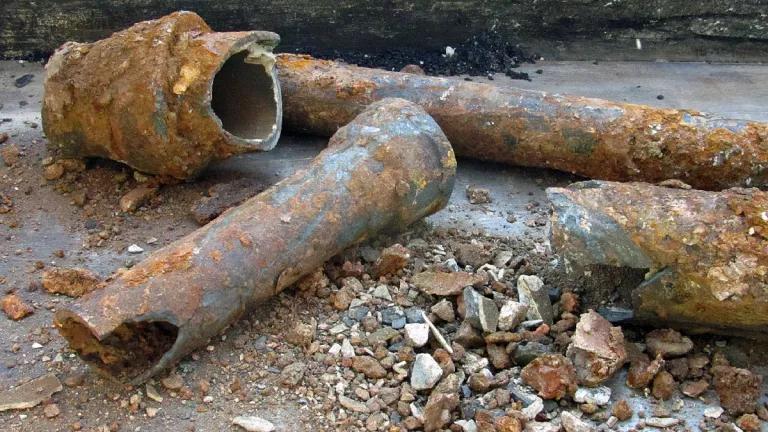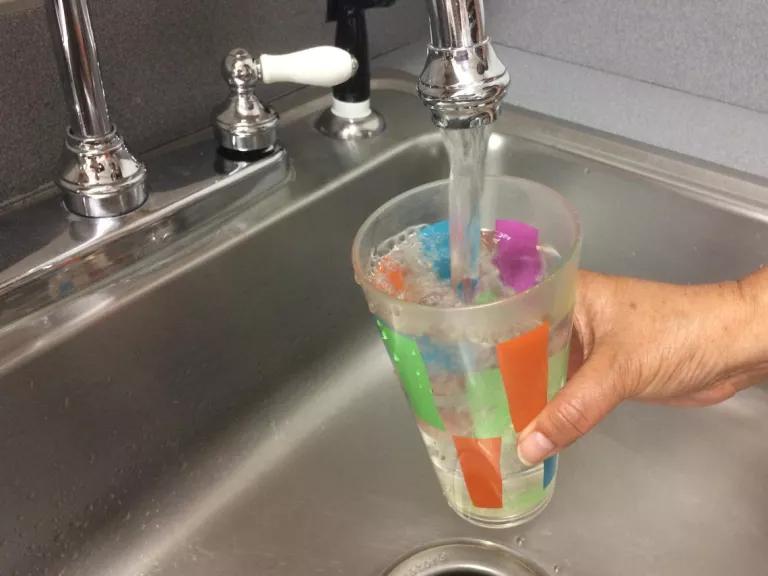Big Chance to Get the Lead Out and Fix Water Infrastructure
There's an unprecedented opportunity to finally fix the scourge of lead-contaminated tap water, and to address our decrepit drinking water and sewer systems. But we must act now!

Decrepit pipes and water infrastructure are falling apart across the country.
We now have an unparalleled opportunity to finally tackle the national lead-contaminated drinking water crisis and our broader water infrastructure problems. Recent polling by Navigator Research found that a strong majority of voters—83 percent (including nearly three-fourths of Republicans, 80 percent of Independents and 91 percent of Democrats)—support eliminating all lead pipes in drinking water systems. This was the second most broadly-supported component of President Biden’s infrastructure plan, following only the repair of roads and bridges.
For the first time, the President of the United States is calling for the removal of every lead service line in the country. The President is asking for a total of $111 billion in funding for water infrastructure, including the $45 billion removal of all lead service lines, plus $56 billion broadly for water and sewer infrastructure, and $10 billion for PFAS and small and rural water and sanitation. In addition, the Environmental Protection Agency (EPA) recently announced that it is reviewing the Lead and Copper Rule and soliciting the input of heavily-affected communities, creating opportunities for a major strengthening of that key rule.
It’s far past time to pull out all of the lead lines in the country. We must adopt the President’s lead service line removal and broader water infrastructure funding proposals. Indeed, we need to go beyond the President’s funding proposals for water infrastructure, particularly to address especially low-income and disadvantaged communities’ water infrastructure.

David W. Morganwalp/USGS
A couple of weeks ago the Senate approved by an overwhelming 89-2 vote the modest Drinking Water and Wastewater Infrastructure Act of 2021. This bill would authorize a total of $35.5 billion dollars for water infrastructure, including small investments in lead service line removal and some funding for broader drinking water and wastewater infrastructure. It also includes a pilot program to provide some low-income households assistance to help them afford their water, which should be expanded into a broader national affordability program. While substantially more funding is urgently needed than is authorized in the Senate-passed bill, the strong bipartisan vote supporting the legislation is a good signal that there is extremely broad support from both parties for investing in our water infrastructure.
In sum, we urge the following steps:
- Fully fund President Biden’s proposal to remove 100 percent of lead service lines for $45 billion dollars.
- Fund at least $100 billion for all types of drinking water, sewer and stormwater infrastructure over the next 5 years, including $50 billion for the drinking water State Revolving Fund plus $50 billion for the Clean Water State Revolving Fund, to help address the backlog of water infrastructure needs. EPA has found there are at least $473 billion in drinking water infrastructure needs, and $271 billion in clean water needs. The American Water Works Association has estimated that the total drinking water needs alone are about $1 trillion dollars. Priority must be given to Environmental Justice communities and other overburdened communities that are in most in need of assistance, with a significant percentage of this funding provided as grants rather than loans. President Biden’s proposal to fund $56 billion for drinking water and clean water combined is a good down payment towards addressing these needs, but will not be sufficient over the long run.
- Fix EPA’s Lead and Copper Rule (see my earlier blog with recommendations), while letting citizens more easily sue for relief from contaminated water.
- Enforce the Lead and Copper Rule and other SDWA rules. As Dr. Pullen Fedinick and colleagues at Coming Clean and Environmental Justice Health Alliance have demonstrated in their landmark report Watered Down Justice, there is an undercurrent of structural racism that creates an unequal playing field for different communities. Improved enforcement, technical assistance, and targeted funding to help low-income and BIPOC communities is critical.
- Strengthen small systems to ensure their ability to comply with the law. EPA, USDA, and Indian Health Service programs targeting technical and financial assistance must be expanded to help small and disadvantaged systems to provide safe drinking water and sanitation, including providing assistance to underserved communities that completely lack access to public water and wastewater systems.
- Create a permanent national low-income water assistance program in an infrastructure package, as a step toward more comprehensive water affordability solutions.




